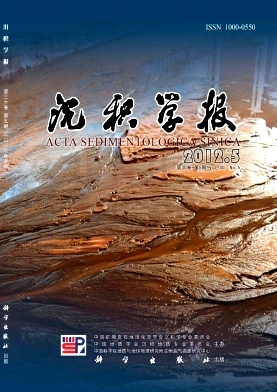Petrological Characteristics and Origin of Permian Fengcheng Formation Dolomitic Rocks in WuerheFengcheng Area, Junggar Basin
- Publish Date: 2012-10-10
-
Key words:
- Junggar /
- Permian /
- WuFeng Area /
- Fengcheng Formation /
- geochemistry /
- dolomitization /
- origin /
- /
- /
- /
- /
Abstract: In order to analyze the dolomite origin of Permian(Fengcheng Formation) in the northwest edge of Junggar basin. This article take the rockmineral analysis, thinsection analysis and geochemical analysis, and systematically analyzed this set of dolomite geochemistry characteristics and their origin. The research indicated that the dolomite mainly could divide into muddy dolostone, dolomitic tuff and dolomitic mudstones. The crystal size of dolomite greatly varies, mainly consisting of powder crystal, fine or micrite dolomites, which crystals are euhedral or subhedral. Dolomite fills in bedding or cracks or distribute in rocks with patterns of strip belts, laminated structure or gobbets. Dolomitization is not incompletely, residual calcite still be found in rocks. Dolostone commonly show ribbon, crumb, sausage or lens shapes in rocks, partly laminate and satellite. Sr content varies greatly between 95.9~783.6 μg/g with an average of 447 μg/g because of replenishment of freshwater and intense evaporation. Conclusion can be reached that sedimentary environment is mainly salt water with little amount of freshwater supplement and related to evaporative lake. V/Ni ratio varies greatly,and largely distribute in an range of 1.2~2.9. It refers to dolomitic rocks form in brackish lacustrine environment with complex setting and various salinity. Mn content is relatively low, varies between 133~985 μg/g with an average of 579 μg/g. From Mn data, we can conclude that aragonite forms in relatively deep water. In studying area, δ13C is low and distributes in an range of 1.6‰~5.2‰(PDB) with an average of 2.9‰(PDB).δ18O data still be low, and varies between 14.8‰~3.2 with average of 3.01 .The characteristics of petromineralogy and the data of geochemical analyzation in Fengcheng Formation show that the dolomite in this area mainly formed in a peaceful, deep and high salinity semiclosed bay environment. Permian periods climate is hot, speedy evaporation and frequent volcanic, besides, short of fresh water supply, those factors provide favourable source of magnesium ions and hydrodynamic condition to form dolomite. In this period, the bays deposit tuff or mudstones which are rich in aragonite or high magnesian calcite, during the early diagenesis ,the rocks convert to plenty of dolomitic tuff and dolomitic mudstones infiltration and circumfluence effect. In the middle and late diagenesis, compaction and mesothermal and micro thermal processes, in the study areas mainly consist of fine or medium dolomites, in which crystals are euhedral or subhedral.
| Citation: | Petrological Characteristics and Origin of Permian Fengcheng Formation Dolomitic Rocks in WuerheFengcheng Area, Junggar Basin[J]. Acta Sedimentologica Sinica, 2012, 30(5): 859-868. |






 DownLoad:
DownLoad: